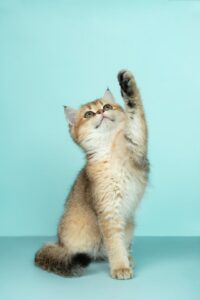
The History and Origin of Ragdoll Cats: A Comprehensive Guide
Contents
Ragdoll cats are one of the most admired and adored cat breeds in the world. They’re known for their sweet and docile personalities, making them a great option for families with children or other pets. But did you know that there’s actually a lot more to these fuzzy felines than meets the eye? In this article, we’ll take a look at the history of ragdolls and learn how they came to be so popular.
What is the history of ragdoll cats?
The history of ragdoll cats is a relatively short one, but it’s still interesting to look back on. The first ragdolls were bred in America in 1963. The breed was created by two California sisters named Ann Baker and Kathleen Smith who wanted to create a cat that had all the qualities they desired: floppy body, sweet disposition and loving attitude towards humans. They achieved this by crossing an Abyssinian with a Persian cat (both breeds have long histories).
The first litter was born in 1964; however it wasn’t until 1976 that Ann Baker decided she wanted her creation recognized as its own breed and set about applying for recognition from several organizations including CFA (Cat Fanciers’ Association) which finally granted official recognition in 1984 after extensive testing had been done on the breed’s health characteristics such as coat coloration etc…
Where do ragdoll cats come from?
Ragdolls are a hybrid breed. They are a mix of the Persian, Angora and Siamese breeds. The first ragdoll cats were bred in California in the 1960s by Ann Baker who wanted to create an affectionate cat that would be more relaxed than other breeds. She named them after the Ragdoll cat in the 1960s cartoon series “The Mouse Factory.”
Ragdoll kittens have blue or odd-colored eyes at birth and will only begin to show their true colors as they grow older (around 6 months). Their fur is long, silky, thick and plush due to their mixed heritage; this makes them perfect for cuddling up with on cold days!
What breed are ragdolls?
Ragdolls are a breed of cat. They were first bred by Ann Baker in California in the 1960s, who wanted to create a cat that was friendly and docile. She did this by crossing a Persian with an Angora rabbit and then breeding the offspring with each other.
The resulting cats have curly fur, blue eyes and long tails that curl over their backs when theyre happy or relaxed (this is called “looping”). They can weigh up to 12kg (27lbs).
How did the breed come about?
The Ragdoll is a relatively new breed of cat. It was created by Ann Baker, who wanted to produce a cat that had the personality of the Persian but with the coat and color of the Siamese. In 1964 she acquired her first cat–a bluepoint Siamese named Daddy Warbucks–and bred him with a brown tabby American Shorthair named Mother Goose. The resulting litter contained two kittens: Rosie and Tinkerbell (who later went on to have kittens herself).
The cats were friendly and docile from birth; they had long coats, floppy ears, gentle dispositions and were easy to handle by adults as well as children alike. These traits were passed on through subsequent generations until they eventually became known as “Ragdolls”.
Ragdolls are a unique and lovable breed that have a rich, interesting history.
They were first developed in the United States, where they were bred to be large and docile. While they do not have the exact same look today as they did when they were first created, their personalities remain unchanged–Ragdolls are still known for being gentle giants.
Conclusion
Ragdolls are a unique and lovable breed that have a rich, interesting history. They were first bred in the 1960s by Ann Baker, who wanted to create a cat that was kind and gentle like her mother. She worked with Siamese and Persian cats to create this new breed of cat, which she called “Ragdoll.”



Average Rating